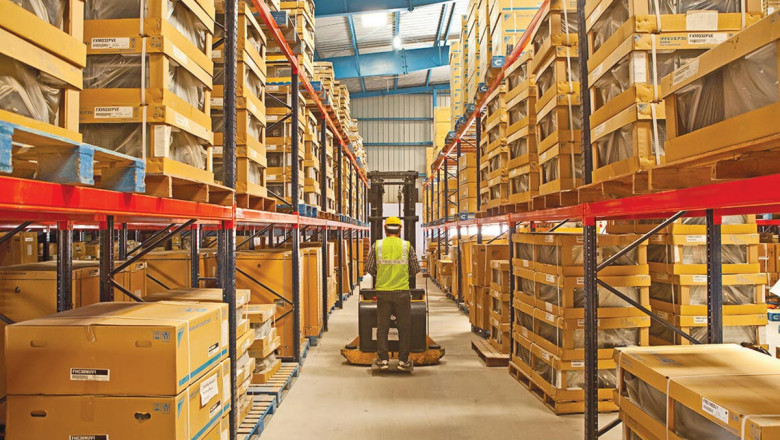views
What’s Driving the Growth of Warehousing in India?
1. E-commerce and Last-Mile Delivery
India’s e-commerce market is growing at an explosive rate, with millions of customers ordering online across metro and tier-2 cities. To meet fast delivery expectations, companies like Amazon, Flipkart, and Reliance are investing in regional distribution centers and last-mile delivery hubs.
2. Government Policies and Infrastructure Push
Policies such as the Goods and Services Tax (GST) have eliminated inter-state check posts and encouraged centralized warehousing strategies. Simultaneously, investments in highways, industrial corridors, and the Dedicated Freight Corridor (DFC) have made it viable to set up large logistics parks near key transport nodes.
3. Global Supply Chain Shifts
With global companies diversifying supply chains away from China, India is positioning itself as a viable alternative. This is leading to greater demand for Grade A industrial and logistics space, especially around ports, airports, and SEZs.
What Are Logistics Parks?
A logistics park is a large-scale facility that combines warehousing, cold storage, distribution centers, and intermodal transport infrastructure in one location. These parks are often developed in clusters and cater to multiple tenants across industries like FMCG, pharmaceuticals, electronics, and auto components.
Key features include:
-
Warehousing units of varying sizes
-
Cold storage and temperature-controlled units
-
Built-to-suit facilities
-
Access to road, rail, air, and port connectivity
-
Shared utilities and security
HexaHome, known for its residential and commercial listings, has also begun mapping and listing industrial and logistics properties, allowing businesses and investors to evaluate assets based on proximity to highways, DFCs, and supply-chain corridors.
Top Warehousing Clusters in India
India’s warehousing hubs are expanding beyond metros. Major clusters include:
-
NCR (Gurgaon, Faridabad, Ghaziabad) – Driven by e-commerce and 3PLs.
-
Mumbai & Pune Belt – Close to JNPT Port and key industrial hubs.
-
Bangalore – Popular for tech and FMCG warehousing.
-
Hyderabad – Growing demand from pharma and electronics sectors.
-
Chennai – Strong automotive supply chain presence.
-
Kolkata – Strategic access to Eastern India and Bangladesh.
Each of these hubs is witnessing the rise of Grade A logistics parks with smart infrastructure and digitized operations. HexaHome users can now search for industrial spaces filtered by amenities like loading docks, floor height, and highway access.
Role of Technology: Hexadecimal Software’s Contribution
As logistics becomes more complex, technology is essential for managing space, lease cycles, tenants, and compliance. This is where Hexadecimal Software comes in. Its digital solutions for the warehousing sector offer:
-
Warehouse Management System (WMS): Tracks inventory, movement, and space utilization in real-time.
-
Asset Lifecycle Management: Digitizes lease agreements, renewal alerts, and facility maintenance schedules.
-
Compliance Automation: Ensures adherence to safety, fire, and zoning regulations.
-
IoT Integration: Monitors temperature, energy use, and asset health across large parks.
-
Dashboards and Analytics: Gives developers and operators a centralized view of performance metrics and vacancy rates.
These tools reduce manual errors, improve operational efficiency, and offer better tenant experiences—especially crucial for parks that house dozens of different clients across millions of square feet.
Investment and Future Outlook
Private equity and institutional investors are bullish on the warehousing sector. India received over $2.5 billion in warehousing investments in the past few years, with global players like Blackstone, ESR, and GLP entering the market.
Key trends shaping the future:
-
Rise of multi-level warehouses in land-scarce metros.
-
Increased demand for cold chain logistics (especially post-COVID).
-
Emergence of automation and robotics in fulfillment centers.
-
Development of green logistics parks using solar power and sustainable materials.
HexaHome and Hexadecimal Software are both evolving to support these trends—whether through green-compliance certifications, automation features, or AI-based property discovery suited to industrial needs.
Conclusion
The growth of warehousing and logistics parks in India is not just a real estate story—it’s a story of economic transformation, driven by technology, policy, and consumer demand. As the sector matures, organized, data-driven platforms like HexaHome and digital infrastructure from Hexadecimal Software are becoming indispensable.
Together, they are helping investors, developers, and tenants find the right space, stay compliant, and scale operations efficiently in one of India’s most exciting real estate segments.














Comments
0 comment